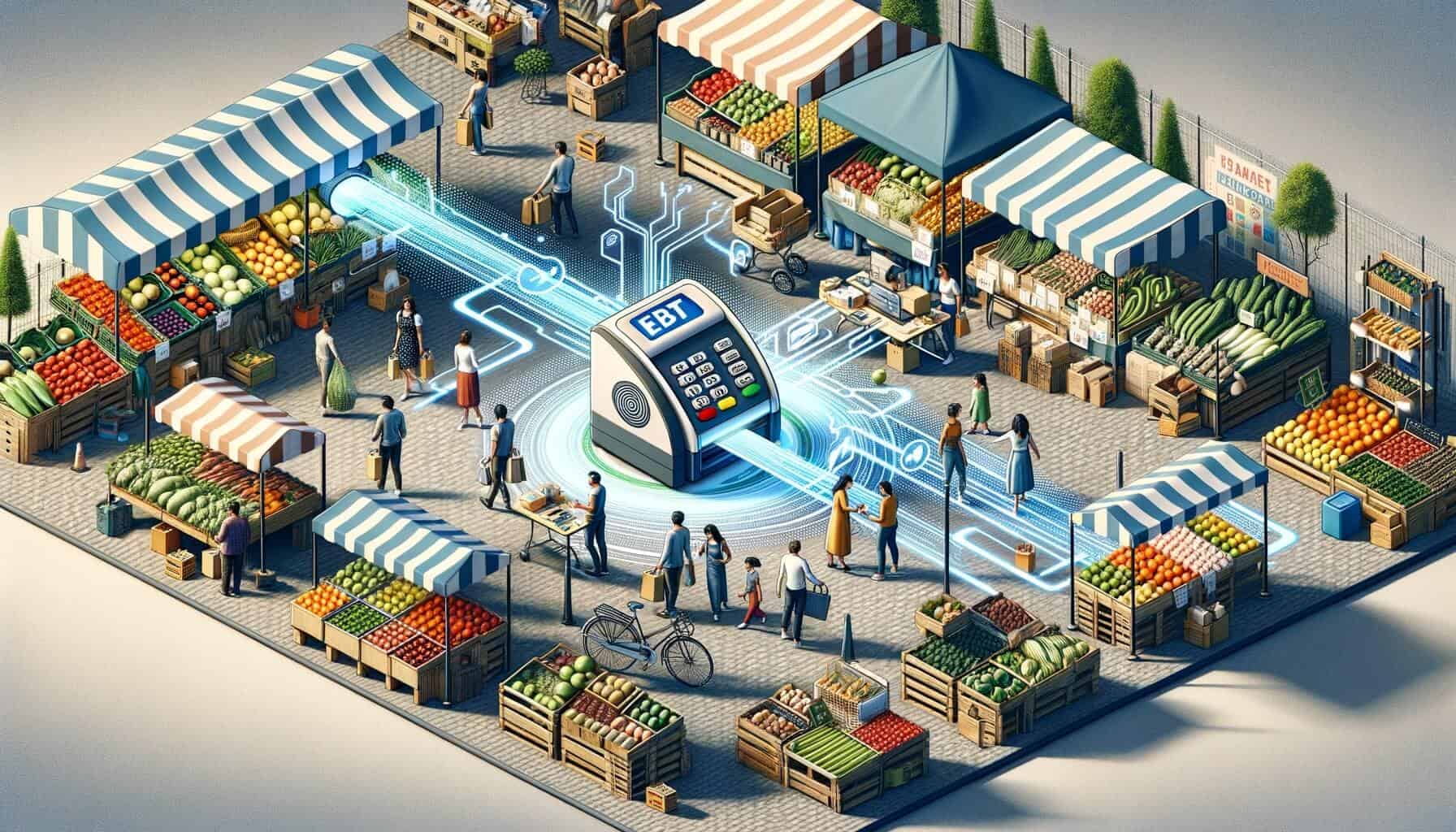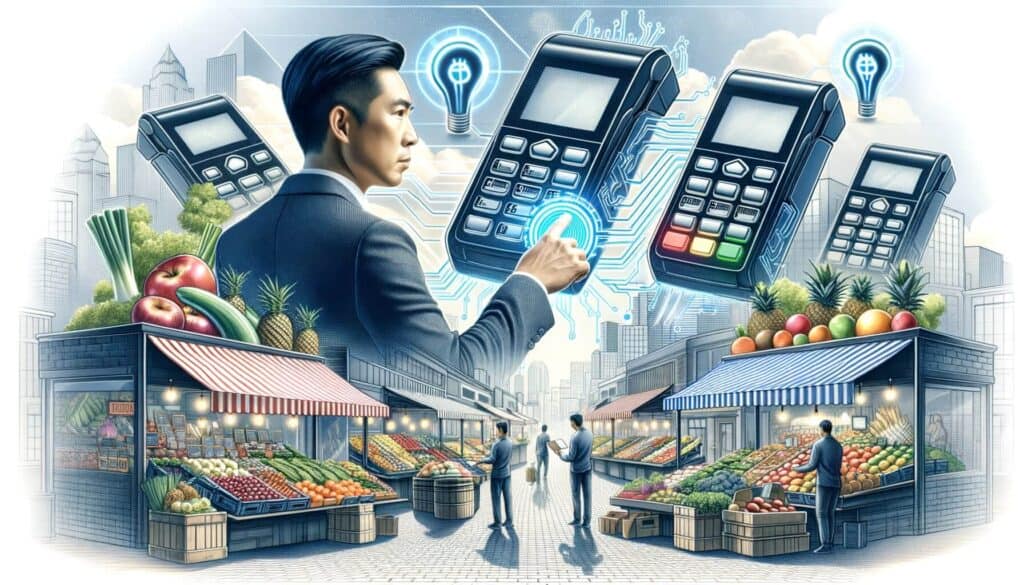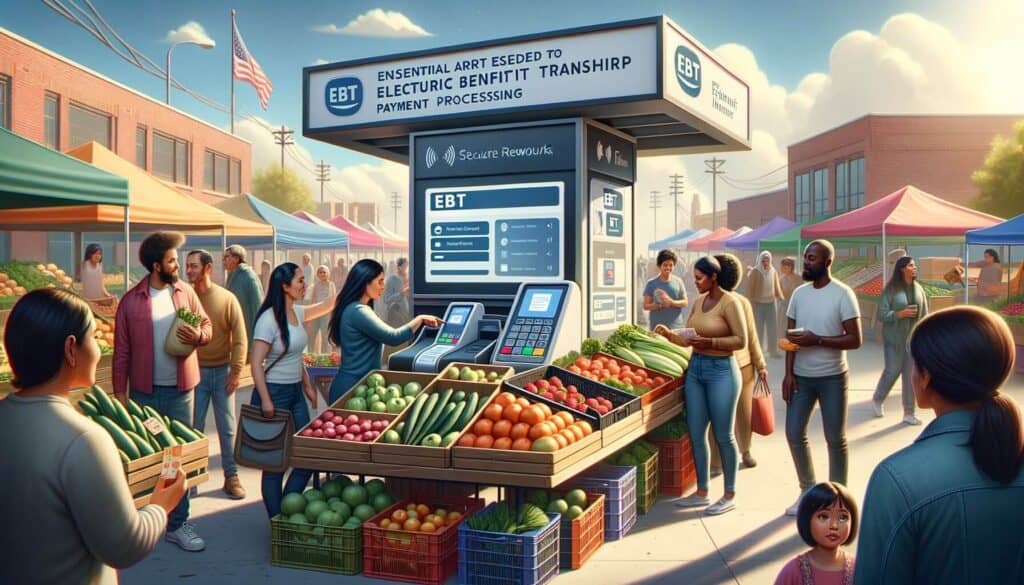
By Sharon Watson February 22, 2025
In recent years, there has been a growing trend towards accepting Electronic Benefit Transfer (EBT) payments in farmer’s markets across the country. EBT payment processing allows individuals and families who rely on government assistance programs, such as the Supplemental Nutrition Assistance Program (SNAP), to use their benefits to purchase fresh, locally grown produce and other eligible food items directly from farmers and vendors at these markets.
This not only benefits low-income individuals and families by increasing their access to healthy, nutritious food, but it also supports local farmers and stimulates the local economy.
Understanding the Benefits of EBT Payment Processing for Farmer’s Markets

The implementation of EBT payment processing in farmer’s markets offers numerous benefits for both the market and its customers. Firstly, it expands the customer base by attracting individuals and families who rely on government assistance programs. According to the United States Department of Agriculture (USDA), over 40 million Americans receive SNAP benefits, making them a significant potential customer segment for farmer’s markets. By accepting EBT payments, markets can tap into this large pool of potential customers and increase their sales.
Secondly, EBT payment processing promotes food security and access to healthy food options for low-income individuals and families. Farmer’s markets are known for offering fresh, locally grown produce, which is often more nutritious than processed foods found in supermarkets. By accepting EBT payments, farmer’s markets provide an opportunity for SNAP recipients to access these healthier food options, contributing to improved overall health and well-being.
Step-by-Step Guide: Setting Up EBT Payment Processing in Your Farmer’s Market
Setting up EBT payment processing in a farmer’s market may seem like a daunting task, but with the right guidance, it can be a straightforward process. Here is a step-by-step guide to help you navigate through the setup process:
1. Determine Eligibility: Before proceeding with the setup, ensure that your farmer’s market meets the eligibility criteria set by the USDA. Generally, farmer’s markets that sell at least 50% fresh, unprocessed produce are eligible to participate in the SNAP program.
2. Obtain a SNAP Retailer ID: To accept EBT payments, you need to become an authorized SNAP retailer. Start by obtaining a SNAP Retailer ID from the USDA. This ID is necessary for the application process and subsequent transactions.
3. Complete the Application: Fill out the SNAP retailer application form provided by the USDA. The application requires information about your market, including its location, operating hours, and the types of products you sell.
4. Attend Mandatory Training: Once your application is approved, you will be required to attend mandatory training provided by the USDA. This training will familiarize you with the rules and regulations of the SNAP program and provide guidance on how to process EBT payments.
5. Acquire EBT Equipment: To process EBT payments, you will need to acquire the necessary equipment, including a point-of-sale (POS) device or a mobile card reader. These devices are used to swipe or insert EBT cards and process transactions securely.
6. Test the System: Before launching EBT payment processing at your farmer’s market, it is crucial to test the system to ensure that everything is functioning correctly. Conduct a few test transactions to verify that the equipment is working properly and that you can process EBT payments seamlessly.
7. Promote EBT Acceptance: Once your EBT payment processing system is up and running, it is essential to promote its acceptance at your farmer’s market. Utilize various marketing channels, such as social media, flyers, and signage, to inform potential customers that EBT payments are now accepted.
Choosing the Right EBT Payment Processor for Your Farmer’s Market

When it comes to choosing an EBT payment processor for your farmer’s market, there are several factors to consider. Here are some key considerations to help you make an informed decision:
1. Cost: Evaluate the cost structure of different EBT payment processors. Look for processors that offer competitive rates and transparent pricing, with no hidden fees or long-term contracts.
2. Compatibility: Ensure that the EBT payment processor you choose is compatible with your existing hardware and software systems. This will help streamline the setup process and minimize any potential disruptions to your operations.
3. Customer Support: Look for an EBT payment processor that offers reliable customer support. In case of any technical issues or questions, it is crucial to have access to prompt assistance to minimize downtime and ensure smooth operations.
4. Security: Data security is of utmost importance when processing EBT payments. Choose an EBT payment processor that complies with Payment Card Industry Data Security Standard (PCI DSS) requirements to protect sensitive customer information.
5. Reporting and Analytics: Consider processors that offer robust reporting and analytics capabilities. These features can provide valuable insights into your sales performance, customer behavior, and trends, helping you make informed business decisions.
Essential Equipment and Technology for EBT Payment Processing in Farmer’s Markets

To successfully process EBT payments in your farmer’s market, you will need to invest in the right equipment and technology. Here are the essential components:
1. Point-of-Sale (POS) Device: A POS device is the primary tool for processing EBT payments. It allows you to swipe or insert EBT cards, enter the transaction amount, and complete the payment securely. Choose a POS device that is user-friendly, reliable, and compatible with your chosen EBT payment processor.
2. Mobile Card Reader: If your farmer’s market operates in multiple locations or you prefer a more flexible setup, consider using a mobile card reader. These devices can be connected to smartphones or tablets, allowing you to process EBT payments on the go.
3. Internet Connection: A stable and secure internet connection is essential for seamless EBT payment processing. Ensure that your farmer’s market has a reliable internet connection to avoid any disruptions during transactions.
4. Receipt Printer: Invest in a receipt printer to provide customers with a printed record of their EBT transactions. This adds a professional touch to the payment process and allows customers to keep track of their purchases.
5. Cash Register: While not directly related to EBT payment processing, having a cash register can help streamline your overall operations. It allows you to handle cash transactions separately from EBT payments, making it easier to reconcile your sales at the end of the day.
Ensuring Compliance and Security in EBT Payment Processing for Farmer’s Markets

Compliance and security are critical aspects of EBT payment processing in farmer’s markets. To ensure that your market meets all the necessary requirements and safeguards customer information, follow these guidelines:
1. PCI DSS Compliance: The Payment Card Industry Data Security Standard (PCI DSS) is a set of security standards that all businesses accepting card payments, including EBT, must adhere to. Ensure that your EBT payment processor is PCI DSS compliant and follow the recommended security practices to protect customer data.
2. Secure Network: Implement a secure network infrastructure to protect customer information during EBT transactions. This includes using firewalls, encryption, and secure Wi-Fi networks to prevent unauthorized access to sensitive data.
3. Employee Training: Train your staff on the proper handling of EBT payments and customer information. Educate them about the importance of data security, including best practices for handling EBT cards and maintaining customer privacy.
4. Regular Audits: Conduct regular audits of your EBT payment processing system to identify any vulnerabilities or potential security breaches. This can help you address any issues promptly and ensure that your market remains compliant with security standards.
Promoting EBT Payment Acceptance and Outreach in Your Farmer’s Market
Once you have set up EBT payment processing in your farmer’s market, it is crucial to promote its acceptance and conduct outreach to potential customers. Here are some effective strategies to consider:
1. Social Media Campaigns: Leverage the power of social media platforms to spread the word about your farmer’s market accepting EBT payments. Create engaging posts, share customer testimonials, and highlight the benefits of using EBT at your market.
2. Collaborate with Local Organizations: Partner with local organizations that support low-income individuals and families, such as food banks or community centers. Collaborate on outreach initiatives to inform their clients about the availability of EBT payments at your farmer’s market.
3. Flyers and Signage: Display clear and visible signage at your market indicating that EBT payments are accepted. Distribute flyers in low-income neighborhoods, community centers, and other locations where potential EBT customers may frequent.
4. Incentives and Promotions: Offer incentives and promotions specifically for EBT customers to encourage their participation. This could include discounts, bonus tokens, or special deals on certain products.
5. Community Events: Participate in community events and fairs to raise awareness about your farmer’s market and its EBT payment acceptance. Set up a booth, provide information, and engage with potential customers to promote the benefits of shopping at your market.
Troubleshooting Common Issues in EBT Payment Processing for Farmer’s Markets
While EBT payment processing in farmer’s markets is generally smooth, there may be occasional issues that arise. Here are some common problems and their potential solutions:
1. Connectivity Issues: If you experience connectivity issues with your POS device or mobile card reader, ensure that your internet connection is stable. Restart the device and check for any software updates that may resolve the problem.
2. Card Declines: If an EBT card is declined during a transaction, ask the customer to verify their card balance. It is also possible that the card may be damaged or expired. In such cases, advise the customer to contact their local SNAP office for assistance.
3. Transaction Errors: If you encounter transaction errors, such as incorrect amounts or duplicate charges, double-check the transaction details and ensure that the correct payment method (EBT) is selected. If the issue persists, contact your EBT payment processor for further assistance.
4. Customer Education: Some customers may be unfamiliar with the EBT payment process or have questions about eligible items. Train your staff to provide clear instructions and answer any customer inquiries to ensure a positive shopping experience.
Frequently Asked Questions (FAQs)
Q1. What is EBT payment processing?
Answer: EBT payment processing refers to the acceptance and processing of Electronic Benefit Transfer (EBT) payments, which are government assistance benefits loaded onto a plastic card. In the context of farmer’s markets, EBT payment processing allows individuals and families who receive SNAP benefits to use their EBT cards to purchase eligible food items directly from farmers and vendors.
Q2. How do EBT payments work?
Answer: EBT payments work similarly to debit card transactions. Customers swipe or insert their EBT cards into a POS device or mobile card reader, enter their Personal Identification Number (PIN), and select the desired payment amount. The transaction is then processed, deducting the payment from the customer’s EBT account.
Q3. What types of food can be purchased with EBT?
Answer: EBT benefits can be used to purchase a wide range of food items, including fruits, vegetables, meat, poultry, fish, dairy products, bread, cereals, and seeds or plants that produce food for the household to grow. However, EBT benefits cannot be used to purchase non-food items, such as alcohol, tobacco, vitamins, or hot prepared foods.
Q4. Can EBT payments be used at all farmer’s markets?
Answer: Not all farmer’s markets accept EBT payments. However, the USDA provides resources and support to help farmer’s markets become authorized SNAP retailers and set up EBT payment processing. It is essential to check with your local farmer’s market to determine if they accept EBT payments.
Q5. Can EBT payments be used online for farmer’s market purchases?
Answer: Currently, EBT payments cannot be used for online purchases at farmer’s markets. However, there are ongoing efforts to expand online EBT payment options to increase access to fresh, locally grown produce for SNAP recipients.
Conclusion
EBT payment processing in farmer’s markets has emerged as a valuable tool to promote food security, support local farmers, and increase access to healthy food options for low-income individuals and families. By following the step-by-step guide outlined in this article, farmer’s markets can successfully set up EBT payment processing systems, choose the right EBT payment processor, and ensure compliance and security.
Promoting EBT payment acceptance and conducting outreach initiatives can further enhance the impact of EBT payment processing in farmer’s markets. With the right equipment, technology, and customer support, farmer’s markets can create an inclusive and accessible shopping experience for all members of the community.